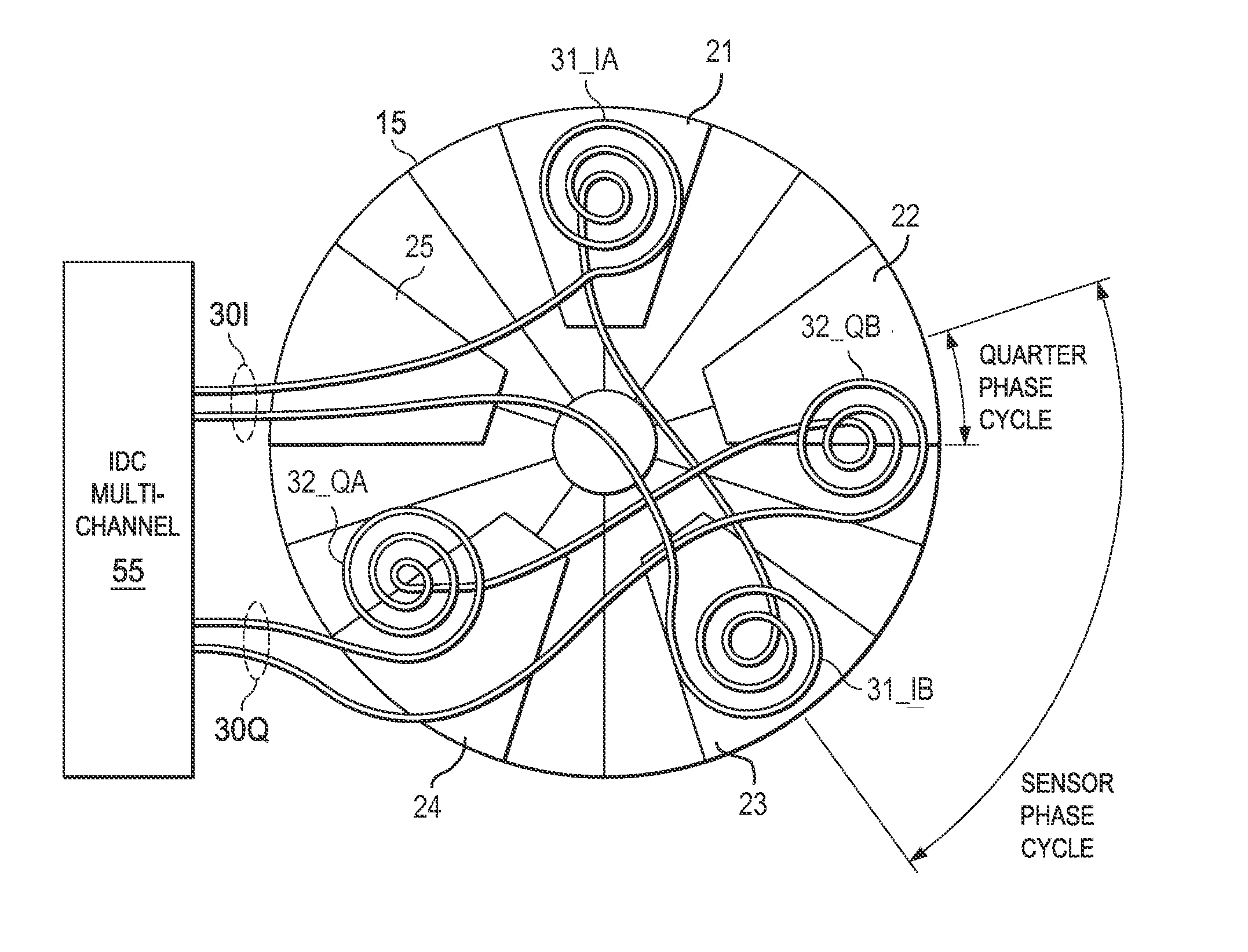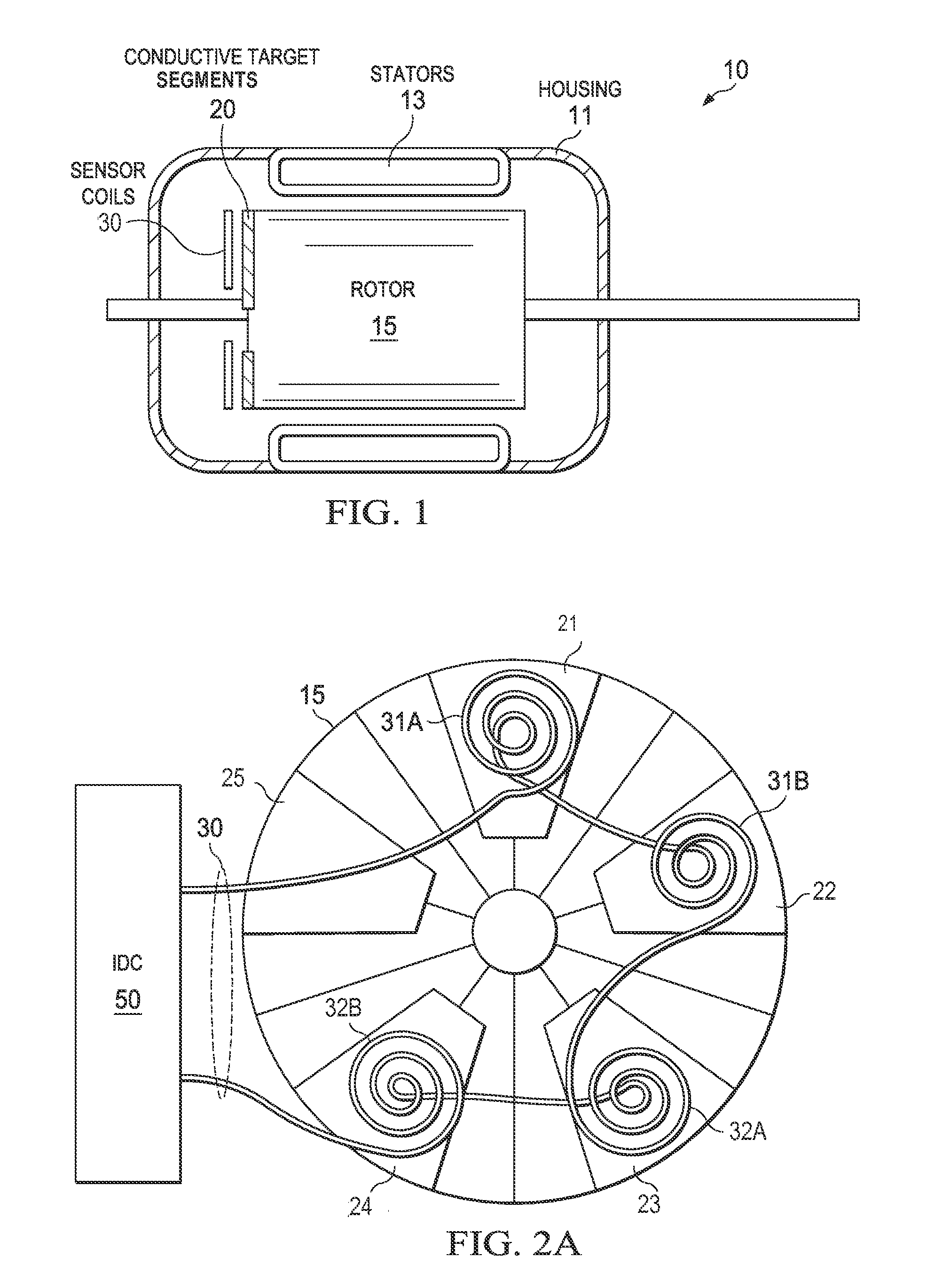Rotational sensing with inductive sensor and rotating axial target surface
a technology of inductive sensor and target surface, applied in the field of rotational sensing, can solve the problems of emi (electromagnetic interference) in the rotational sensing system of stepper and other motor applications
- Summary
- Abstract
- Description
- Claims
- Application Information
AI Technical Summary
Benefits of technology
Problems solved by technology
Method used
Image
Examples
Embodiment Construction
[0019]This Description and the Drawings constitute a Disclosure of example embodiments and applications that illustrate various features and advantages of rotational sensing with inductive sensor(s) and rotating axial target surface.
[0020]In brief overview, a rotational sensing system is adaptable to sensing motor rotation based on eddy current sensing. An axial target surface is mounted to the motor rotor, and includes one or more conductive target segment(s). An inductive sensor is mounted adjacent the axial target surface, and includes one or more inductive sense coil(s), such that rotor rotation rotates the target segment(s) laterally under the sense coil(s). An inductance-to-digital conversion (IDC) unit drives sensor excitation current to project a magnetic sensing field (B-field) toward the rotating axial target surface. Sensor response is characterized by successive sensor phase cycles that cycle between phase_cycle_LMIN in which a sense coil is aligned with a target segment...
PUM
 Login to View More
Login to View More Abstract
Description
Claims
Application Information
 Login to View More
Login to View More - R&D
- Intellectual Property
- Life Sciences
- Materials
- Tech Scout
- Unparalleled Data Quality
- Higher Quality Content
- 60% Fewer Hallucinations
Browse by: Latest US Patents, China's latest patents, Technical Efficacy Thesaurus, Application Domain, Technology Topic, Popular Technical Reports.
© 2025 PatSnap. All rights reserved.Legal|Privacy policy|Modern Slavery Act Transparency Statement|Sitemap|About US| Contact US: help@patsnap.com



